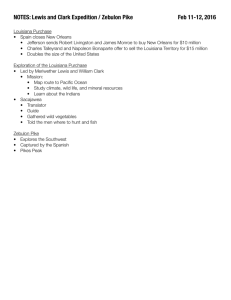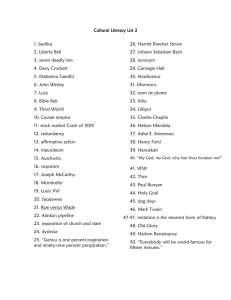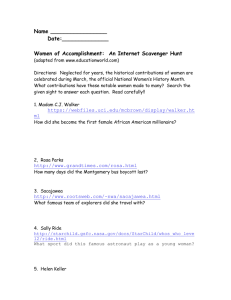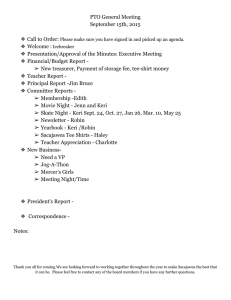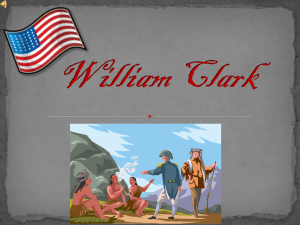American Biography – Sacajawea (About 1787 – 1884) Boinaiv (Grass Child) Sacajawea Idaho
advertisement
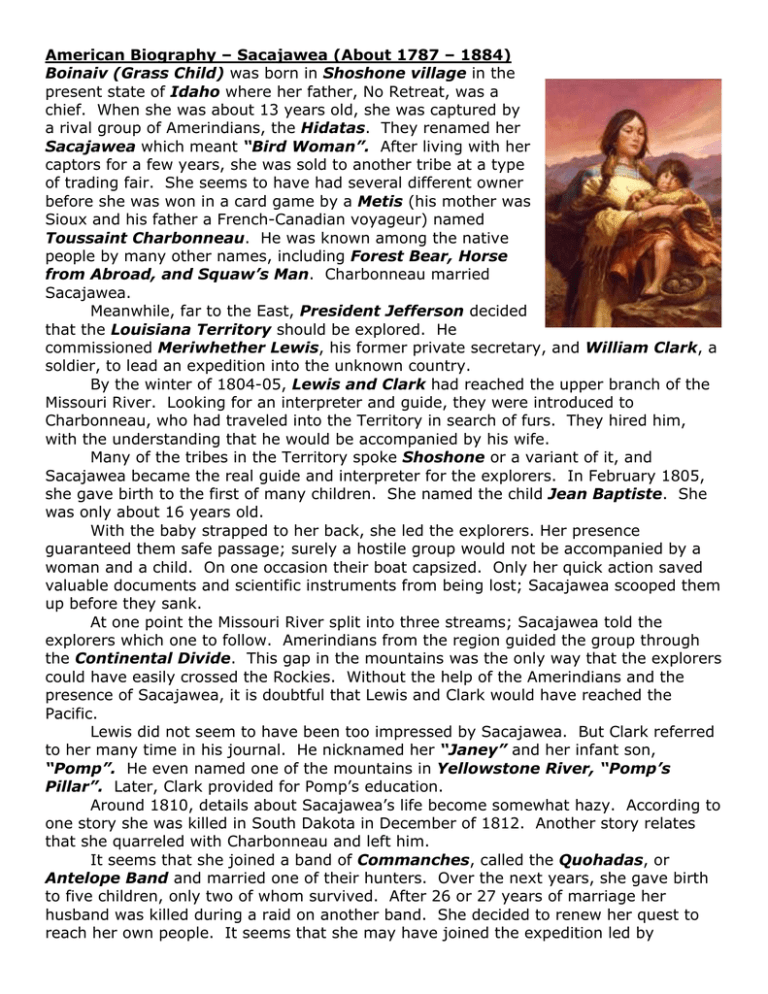
American Biography – Sacajawea (About 1787 – 1884) Boinaiv (Grass Child) was born in Shoshone village in the present state of Idaho where her father, No Retreat, was a chief. When she was about 13 years old, she was captured by a rival group of Amerindians, the Hidatas. They renamed her Sacajawea which meant “Bird Woman”. After living with her captors for a few years, she was sold to another tribe at a type of trading fair. She seems to have had several different owner before she was won in a card game by a Metis (his mother was Sioux and his father a French-Canadian voyageur) named Toussaint Charbonneau. He was known among the native people by many other names, including Forest Bear, Horse from Abroad, and Squaw’s Man. Charbonneau married Sacajawea. Meanwhile, far to the East, President Jefferson decided that the Louisiana Territory should be explored. He commissioned Meriwhether Lewis, his former private secretary, and William Clark, a soldier, to lead an expedition into the unknown country. By the winter of 1804-05, Lewis and Clark had reached the upper branch of the Missouri River. Looking for an interpreter and guide, they were introduced to Charbonneau, who had traveled into the Territory in search of furs. They hired him, with the understanding that he would be accompanied by his wife. Many of the tribes in the Territory spoke Shoshone or a variant of it, and Sacajawea became the real guide and interpreter for the explorers. In February 1805, she gave birth to the first of many children. She named the child Jean Baptiste. She was only about 16 years old. With the baby strapped to her back, she led the explorers. Her presence guaranteed them safe passage; surely a hostile group would not be accompanied by a woman and a child. On one occasion their boat capsized. Only her quick action saved valuable documents and scientific instruments from being lost; Sacajawea scooped them up before they sank. At one point the Missouri River split into three streams; Sacajawea told the explorers which one to follow. Amerindians from the region guided the group through the Continental Divide. This gap in the mountains was the only way that the explorers could have easily crossed the Rockies. Without the help of the Amerindians and the presence of Sacajawea, it is doubtful that Lewis and Clark would have reached the Pacific. Lewis did not seem to have been too impressed by Sacajawea. But Clark referred to her many time in his journal. He nicknamed her “Janey” and her infant son, “Pomp”. He even named one of the mountains in Yellowstone River, “Pomp’s Pillar”. Later, Clark provided for Pomp’s education. Around 1810, details about Sacajawea’s life become somewhat hazy. According to one story she was killed in South Dakota in December of 1812. Another story relates that she quarreled with Charbonneau and left him. It seems that she joined a band of Commanches, called the Quohadas, or Antelope Band and married one of their hunters. Over the next years, she gave birth to five children, only two of whom survived. After 26 or 27 years of marriage her husband was killed during a raid on another band. She decided to renew her quest to reach her own people. It seems that she may have joined the expedition led by Captain John Fremont in 1842. He explored the Oregon Trail from west of the Missouri River to the Rockies. She settled at the fort that had been established by mountain man, Jim Bridger in present-day Utah. In 1868, it is said that she was present at the Great Treaty Council that took place at Fort Bridger. She moved onto the Wind River Reservation, which was located in the western Utah territory. She died there of the effects of old age on April 4th, 1884. She may have been about 100 years old. Without her assistance, the Lewis and Clark expedition probably would not have succeeded. However, as a woman – and an Indian woman – her husband took the credit and the payment of $500 for services rendered. Without the success of the Lewis and Clark expedition, Americans seeking to move west may have been inhibited in proceeding. Ironically, in helping with the settlement of the West, Sacajawea played a role in the displacement of her own people. For further information, read the novel, Sacajawea by Anne Lee Wolds published in 1978.
